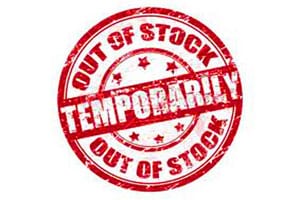 How are backorders affecting your profitability?
How are backorders affecting your profitability?
From our consulting work with clients to improve their merchandise planning, forecasting and management processes and systems, we’ve seen a range of costs over 15 years to be between $7 and $12 for each unit that goes into back order status. I have seen a higher cost for shipping heavier packages. I’m sure you’re asking yourself, how can it be that much?
While many companies throw up their hands and say they just won’t take back orders, let’s take a look at what goes into those costs and what type of sales you’re leaving on the table by going this route.
For an example out of our customer database, a company’s orders are half online and half by phone through their call center. It processed 250,000 apparel orders representing 625,000 units last year, with an average of 2.5 items per order, a $75 average order value and a 15% back order rate. That equates to 93,750 back ordered items.
The truth is there is no simple answer. As I said, the easy answer that many companies adopt – especially ecommerce pure plays – is, don’t show the product on the website and don’t take back orders. That sounds good but you probably are reducing your sales significantly because you only have back orders on bestselling products, never on slow selling and overstocked items.
If you took back orders and studied phantom demand you might find that your sales could be 5% to 10% higher if you had the product in stock to the right level, or if you chased back order demand. This assumes the product can be reordered in a reasonable time frame and isn’t company exclusive. Yes, in today’s digital economy, if you can’t ship immediately, the customer most likely will go to a competitor’s website.
Let’s look at the costs of processing back orders for the illustration above. These costs are a weighted average of 20 companies.
- Fully loaded call center costs per call (includes direct and indirect labor, benefits, occupancy and telecom): $3.91. In the experience of many companies, “Where is my back order?” represents 10% of the calls. There were 125,000 phone orders coming from an even higher number of calls. Let’s assume back order status calls generated 12,500 additional calls at $3.91 per call or $48,875.
- Fully loaded warehouse costs to pick, pack and ship one back order (includes direct and indirect labor, benefits, occupancy and packing materials): $2.18. Warehouse costs for picking 93,750 back orders at $2.18 costs are $204,375.
- Minimum cost for shipping a second package: $4.93 (commercial address) to $7.53 (residential address). This is for a two-pound polybag package. Shipping 93,750 back orders at $4.93 costs per back order is $462,188.
There are several other costs you need to consider, such as the costs to acquire a new customer, or worse yet, their lifetime value; the administrative and overhead costs associated with the business paid for by the increased sales; the merchandising and inventory control time involved in expediting back orders; and the expedited freight costs to bring in back ordered items. All these costs are buried in your selling and administrative expenses and aren’t broken out in the example above.
You’re never going to totally eliminate back orders, nor should you try to because of the high inventory levels required. Many types of businesses, especially B2B companies that can reorder often in a shorter period of time, get considerably higher initial order fill rates and have only a fraction of the back orders compared to B2C operations.
The consequences of back orders aren’t just increased costs or lower sales; they can damage your customer relationship. Customers may overlook one back ordered item, but they will likely find other storefronts to shop or someone else’s similar product rather than wait for something from you again.
Inventory is one of the largest balance sheet assets in most businesses, and of course you can’t book a sale until you ship the product. The ability to find that optimal inventory point requires better merchandise planning, forecasting and inventory control systems and processes. Now with omnichannel shipping points from stores and DCs, managing inventory is of strategic importance. Therefore, an inventory management process review can help you rake in bigger profits.
Curt Barry is president of F. Curtis Barry & Company
